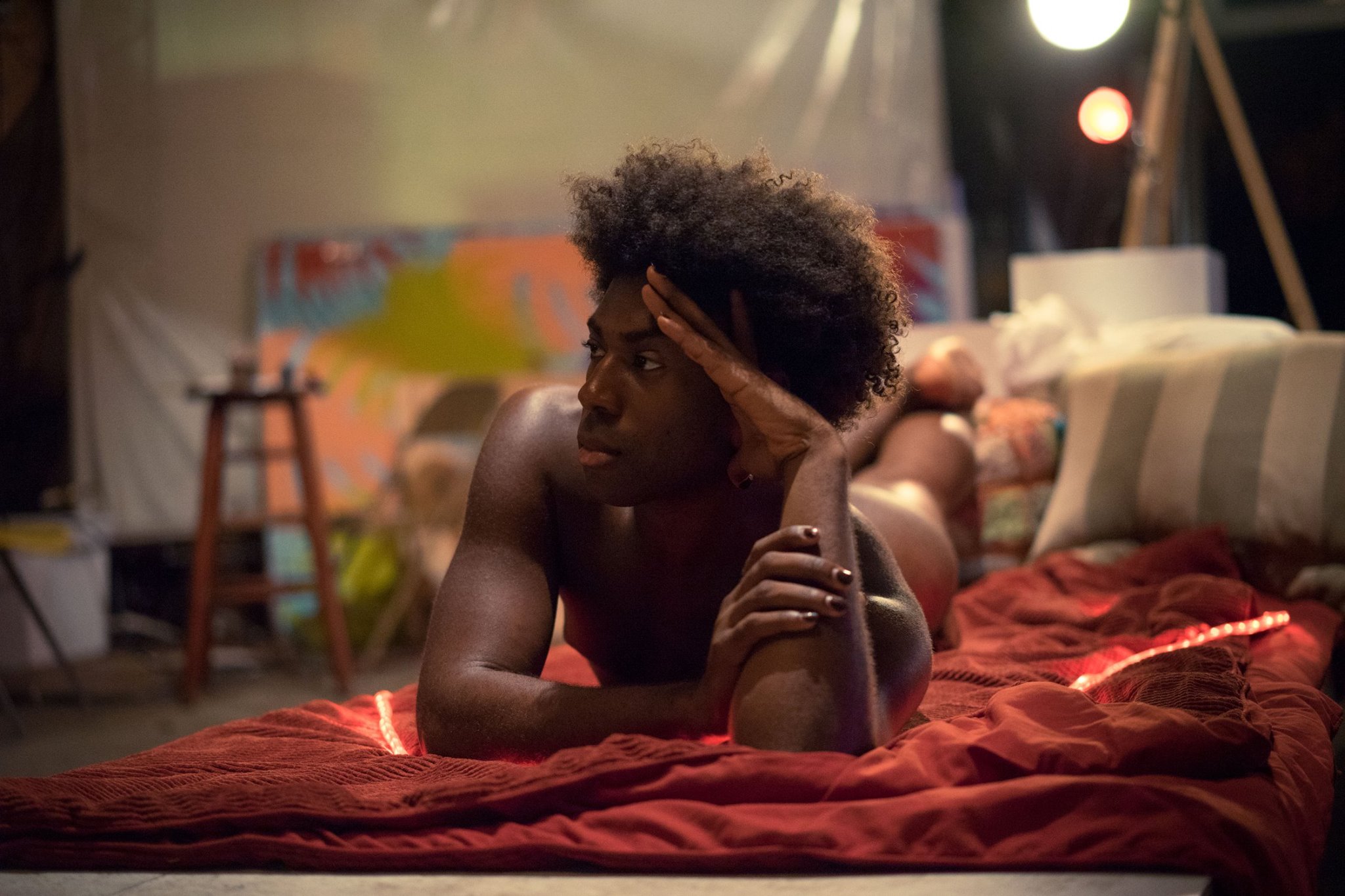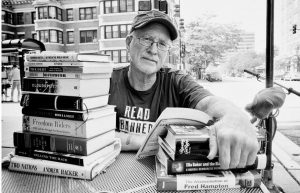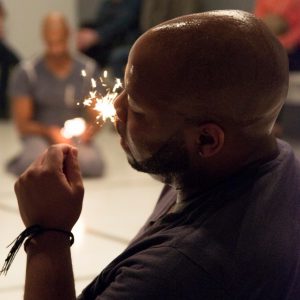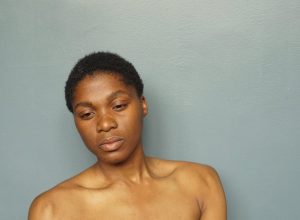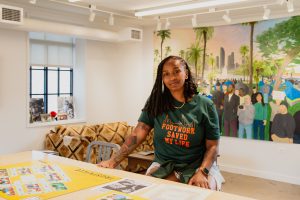Movement Matters is a column that investigates work at the intersection of dance, performance, politics, policy and issues related to the body as the locus of these and related socio-cultural dialogues on race, gender, ability and more. For this installment, we sit down with Darling Shear, a prominent out trans figure in the dance, theater and performance worlds to talk about her history, experience and the challenges of TPOC in an industry too often enthralled with traditional gender ideals of beauty.
Michael Workman: So where are you originally from?
Darling Shear: Yes! From Naperville. There’s a stigma associated with Naperville. I don’t know if it’s a good or bad stigma, but I tell people I’m from Naperville and they’re like, “Oh really? That explains a lot!” It’s just a very wealthy town. They have two downtowns. It’s really big, they have a lot of money over there. But then I moved to Atlanta when I was about 5 or 6 with my grandparents and my mother was just like, “I want you to have the suburban experience like I did.” And, though we were living in the city at the time, “You’re getting a little older and I want you to have a childhood like I did,” because she didn’t want me to be a city child.
I started dancing in the sixth grade and I started formal training as a Freshman at a performing arts high school, what’s now called North Springs Charter School. Ballet, Modern, Jazz, African. It was very professional, as most schools are, but they prepped you so that if you were going to go into this profession, they gave you a lot of good tools. They expected a lot of us.
I moved back to Chicago in 2011, I came back up to do some solo dancing. It was going good for a while and then I started doing burlesque, I did a lot of shows with Vaudezilla. I did that for a few years but still couldn’t get into certain doors. So I was like, “I’ll just do this until I get in somewhere. Then I came out as trans in October 2013, until then I was just queer and people didn’t understand it, I guess? Non-conforming, just gender non-confirming. And I definitely had some obstacles because of that, I definitely—I’ll just be very blunt: I’m a very likable person! I had a lot of friends, it was just a lot of the higher-ups, because they have been—I say this respectfully, but this is something we all face—they had been domesticated into going about a certain type of life and seeing things in a certain way and in the dance world if you’re a woman you have to be a model woman and if you’re a man you have to be a man and so, thankfully, contemporary dance has blurred those lines and made it a little more about the body instead of sexual identity. But I did bump heads with a few people just trying to move forward and get into certain doors because I was often looked at as a drag act. I would be at events or whatever, and people would just be like “Oh, are you the entertainment?” and I would just be like “…no, I’m one of your peers.” So, it was a lot of that. But there were people who were always in my corner and invited me out to things and made sure I always had a ticket when I needed one, you know, to certain events. So, I just put my head down and moved forward, essentially.
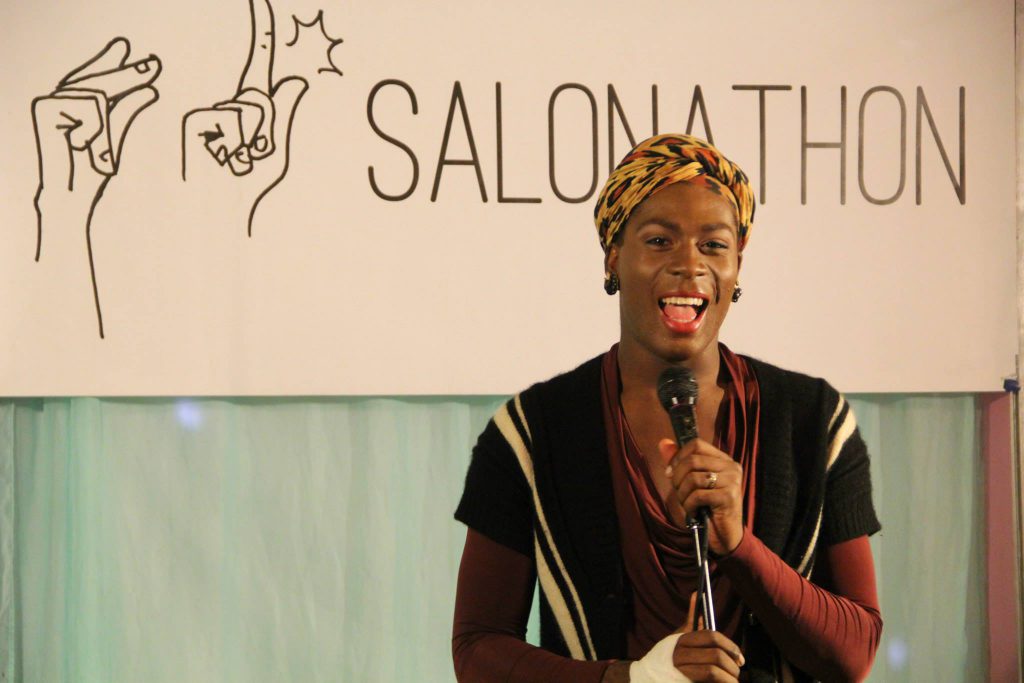
MW: Yeah. It does seem like there has been an important evolution, that there are so many more platforms out there.
DS: Yeah the meeting we were just at [for Audience Architects] for the community convening, there were a number of different questions they were asking and one of them was about the number of gender-nonconforming trans dancers in attendance. And I was just like, “That wasn’t even a question a few years ago.” So, I’m happy the shift is happening but it was definitely rough and I didn’t know what to do. Keep on dancing? Go into another field? It was very trying but I just kept working with people and it was funny, I was looking at my bio for a performance a few days ago and was like, “…has worked with Hinton Battle who played the scarecrow on The Wiz from the Broadway Production, two different soloists from Hubbard Street and soloists with Twyla Tharp, a Tracy Vogt with Philadanco, and I’m like, “What?! Shit is cray!” So why am I not getting into places?
MW: Yes, and that was my next question: where you see your work going and what you want to do?
DS: I think because I felt like such an outcast, I lost sight of what I wanted to do and went into nightlife. And its been lovely. It’s been good to me, and I have so many beautiful friends from it. But that’s not where I wanted to be and so I did have to take time to step back and reexamine where I was going. Right now, I’m in the process of very actively doing more choreography and putting my work on other people. For the most part I am a soloist and I do love it but I have been getting more requests to set choreography for people. I’ve worked with Cerqua Rivera, with Jason Hancock for some future projects. I’ve done a lot of stuff for Erin Kilmurray. I’m a social butterfly. You have to get around, but it happens where you don’t in Chicago because each part of town is like it’s own little village. Right now I’m in Logan.
MW: What would you like to see moving forward with the trans and queer communities and how they develop from where they’re at now?
DS: I was thinking about this and for me, it’s lovely to be the first something, but also awkward when you’re the first. Whoopie Goldberg was saying a few months ago, she said, “Often when you’re the first, you’re forgotten about.” It’s like, what are your intentions for it, why are you doing it? And then the other things is, whenever it’s not a caucasian person that has done or created something, then it becomes about, “Oh, this black or, oh this trans, this gay,” and it’s like, “Yes, that’s an aspect of it but that’s not my everyday thing.” Then when you are being highlighted for things that are about that, then it’s in the proper platform and it’s great and I acknowledge that, but it’s not like I’m walking down the street with a sign on. It’s in the list of things, but it’s not the only thing. So, more recognition in general, but also to step away from this outer shell and really focus on what people are creating. I can only speak to the personal experience, but I’ve had some awesome moments through performance, where people came up to me and just saw a being, not all this other stuff. And that’s what I look at creating with my performance, is to get people to feel something, see another person and not care about x, y and z. Only the message of we need to stop being so negative or be more open-minded. It is a lot to take that on.
MW: Right, so your work is about period pieces. Evoking these ideals of femininity throughout different eras.
DS: Yes, that’s half of it. Half of it is historical jazz re-staging and re-ennactments from film and television from the 20’s up through about the 70’s. And that came about working with Laurie Stallings, a performer and Hubbard Street dancer, who I also think dances for River Street North, working with her in Atlanta and her company Glow ATL. And we were doing a show called Hinterland and Big Boi of Outkast, it was his album Sir Luscious Left Foot: The Son of Chico Dusty had just come out and so it was a free concert, and this dance performance crazy foolishness—and about 20,000 people came out to this event, a parade essentially that started out in a park and turned into a procession and led to another space for the after-party. So he had this one song called General Patton and I was in love with the song. I was like, “What is the track that he sampled for the song?” This was back in 2010. So finally after 3 days of research, I came across this one music blog and they said he sampled the drum march from Aida. So, a bell went off and I decided I wanted to do something with this, because there’s so much stuff where people sample things from the past and then these next generations think it’s some new song and it’s like, “No, that actually came from this person.” Beyonce’s Crazy In Love came from a song I think by the Chi-Lites, and that song came out in the ’70s, so it’s so much stuff where it has been re-used and we think it’s new.
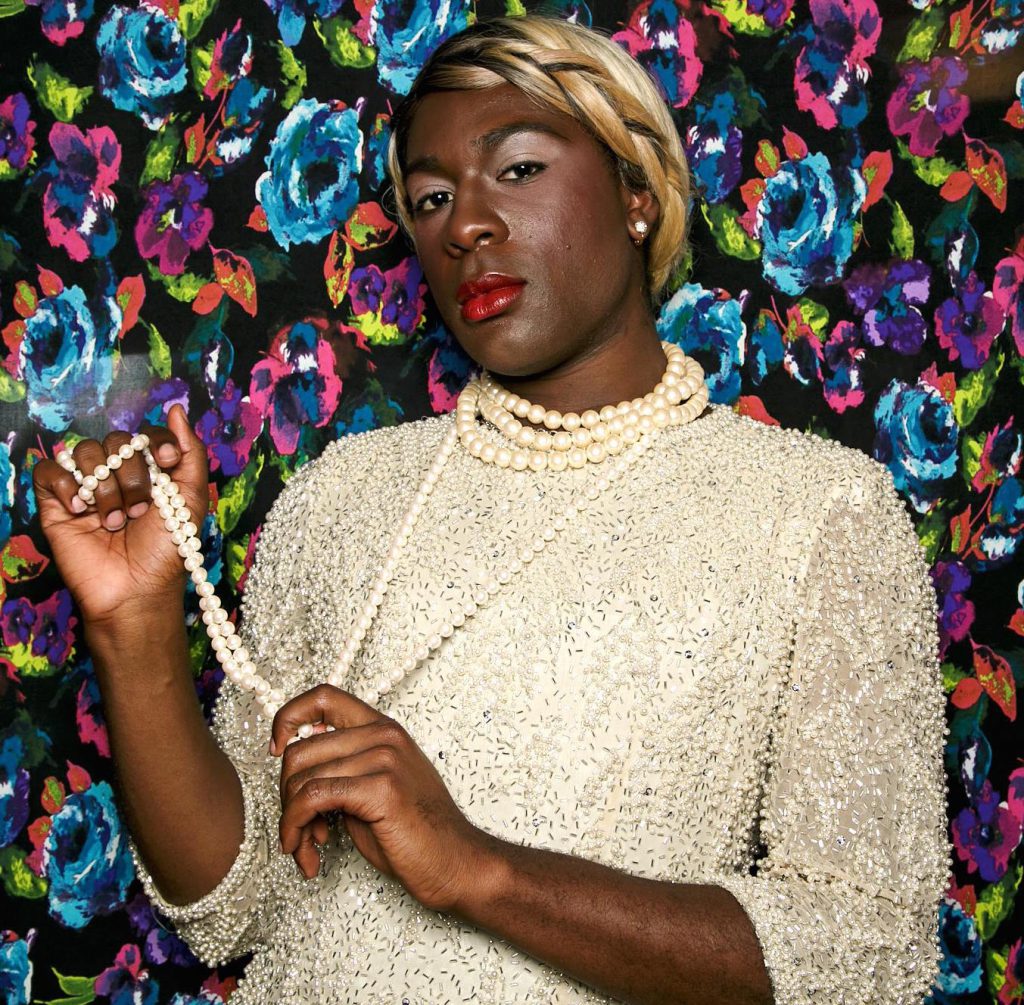
MW: So when you’re presenting these, you’re trying to retain or reinstate some of the original context.
DS: Some of them are reinterpretations because they’re big, choral pieces that has an ensemble and there’s these other things and I’m like, “I’m only a person who can do so much.” I wsh I had the powers to multiply myself. But that’s why I say restagings and re-enactments. It’s not always step for step, but you get the gist of it, essentially. I spend a lot of time doing research, looking at videos, finding costumes, trying to get on the mark as possible. And a lot of the times too with video, certain camera angles and things there’s only so much you can do, so just being realistic about it. So, I have that platform as an educational tool to inform people about who we are and where we come from and that’s how a lot of people know me, through those works. Then I also do my contemporary works which are done—and I’ll probably get in trouble with someone for saying this, but this is what it is and what I learned—using [Ohad Naharin’s] Gaga technique. That’s been interesting, because I usually am a person who is very neutral. I’ve basically said a lot of times I am basically Switzerland in a lot of political affairs. I wasn’t raised dealing with politics in a lot of what’s going on. Being a person with a voice that is heard by many now, it’s very interesting navigating that. So, I’m very mindful about presentation and what I put out there. For the longest time there was an ongoing joke that I was a waspy white woman because I had a certain reserve about how I handle things. Because I do understand that people see something and form an opinion. Being that I am a trans woman of color, this is a fact. This is a thing that most people will only see and a lot of stigma comes with that. A lot of misinformation comes with that. So I work very hard to shift their view. And it is who I am—it is slightly exaggerated, but not that far off; it’s probably about 20% more exaggerated than who I really am, since high school, basically. I’ve always been aware that people are watching, there’s always a camera out there and this was before camera phones were really a thing, but I’ve always just been aware that cameras are out there and you have to watch your step. Thankfully, my grandfather is a music producer and DJ, he’s been in the music industry since he was 16, and I’ve been blessed to meet some of the great names that a lot of people have grown up with and are now starting to introduce their children to. So, you learn things having conversations with them. I’ve also had some great mentors, there’s a person who lives here named Erica Allen, she is the Chicago operations for Growing Power, which is an urban farming company. And then there’s another woman by the name of Carol Kosciosko McCollom, she’s a former model and stylist and public speaker who just does a lot of really great things to empower women. There’s just so many, I couldn’t begin to list all the people. Thankfully, I’ve had a lot of very strong women who helped me.
MW: One of the first things I saw you in was the SWOP fundraiser. Is sex work a cause you’ve been involved in supporting for a long time or was it more of a one-off?
DS: Yes, I have quite a few friends who do it. Again, it’s just that stigma. It’s just one of those things where like…so many people in government do it, who get caught with their pants down and try to turn around and wag their finger. It’s just like, “But you were just…m’kay. Alright.” And I think that was the thing for me, I was always supportive of it but I was very much definitely much more reserved and backed away from it, just because I was always nervous because…I don’t want to be associated with this because I’m a trans woman and then that’s already a thing that people associated with trans women and so it’s just this whole thing. Then I finally got to the point where I was just, “I don’t care anymore, you’re going to think what you think, I know who I am.” I love my friends. I want them to do whatever makes them happy, and sometimes you hustle. I don’t hustle, personally. I do a Foxtrot or a quick step, but to each their own. But yeah, everybody has to make ends meet.
MW: Right, yes. And of course poverty can play a huge role, and people with fewer options are forced to turn to street economies to support themselves. It’s not always optional.
DS: Very true. I’ll support that in any way that I can and so I started to create these pieces that are more sex-positive and sex worker positive. One piece I’ve been doing recently is Love For Sale, Ella Fitzgerald’s version and it’s very well received. I think when you look at our history across the board, in many different societies and cultures, there’s a certain platform we put sex workers on. There’s this idea of this rags to riches thing, Pretty Woman, Moulon Rouge, there’s so many different examples where as a culture we glorify it but at the same time wag our finger at it. I never pointed my finger because I’ve had a lot of fingers pointed at me, so I try to stay away from doing that but also I’ve had my moments where I wasn’t in alignment with some of the things that were going on and it just took me some personal growth to look at the bigger picture.
You can find more on Darling Shear at darlingshearblog.wordpress.com. All images courtesy of the artist.
Please feel free to send questions, comments or tips to Michael Workman at michael.workman1@gmail.com. As part of the Movement Matters series, a monthly online conversation on subjects discussed in the column will take place starting with The Integral Necessity of Dance Criticism on Dec. 15, 6:30-9:30pm at High Concept Laboratories (2233 S. Throop St., Chicago). Please join the Movement Matters Facebook page for updates, and to join in on future online conversations.
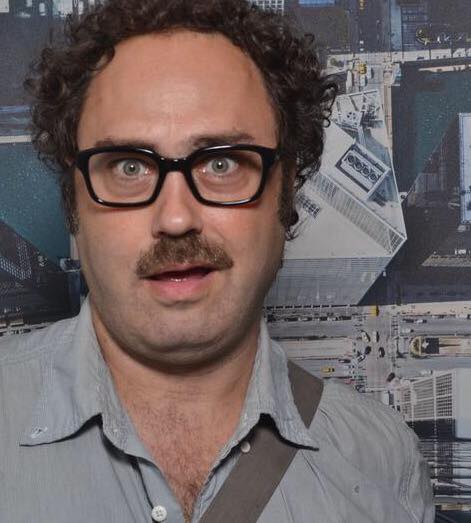 Michael Workman is an artist, writer, dance, performance art and sociocultural critic, theorist, dramaturge, choreographer, reporter, poet, novelist and curator of numerous art, literary and theatrical productions over the years. In addition to his work at The Guardian US, Newcity, Sixty and elsewhere, Workman has also served as a reporter for WBEZ Chicago Public Radio, and as Chicago correspondent for Italian art magazine Flash Art. He is also Director of Bridge, a Chicago-based 501 c (3) publishing and programming organization. You can follow his daily antics on Facebook.
Michael Workman is an artist, writer, dance, performance art and sociocultural critic, theorist, dramaturge, choreographer, reporter, poet, novelist and curator of numerous art, literary and theatrical productions over the years. In addition to his work at The Guardian US, Newcity, Sixty and elsewhere, Workman has also served as a reporter for WBEZ Chicago Public Radio, and as Chicago correspondent for Italian art magazine Flash Art. He is also Director of Bridge, a Chicago-based 501 c (3) publishing and programming organization. You can follow his daily antics on Facebook.
